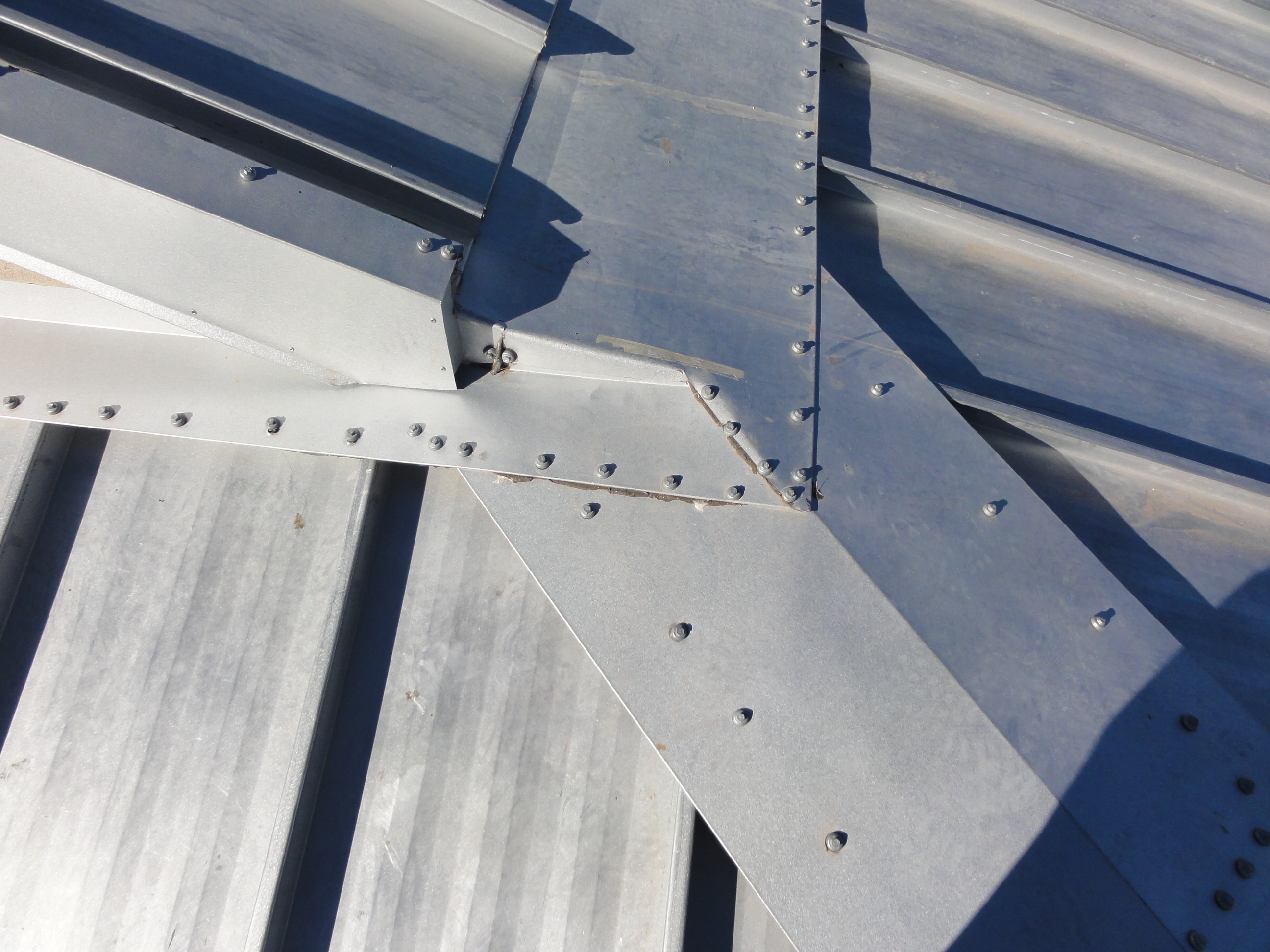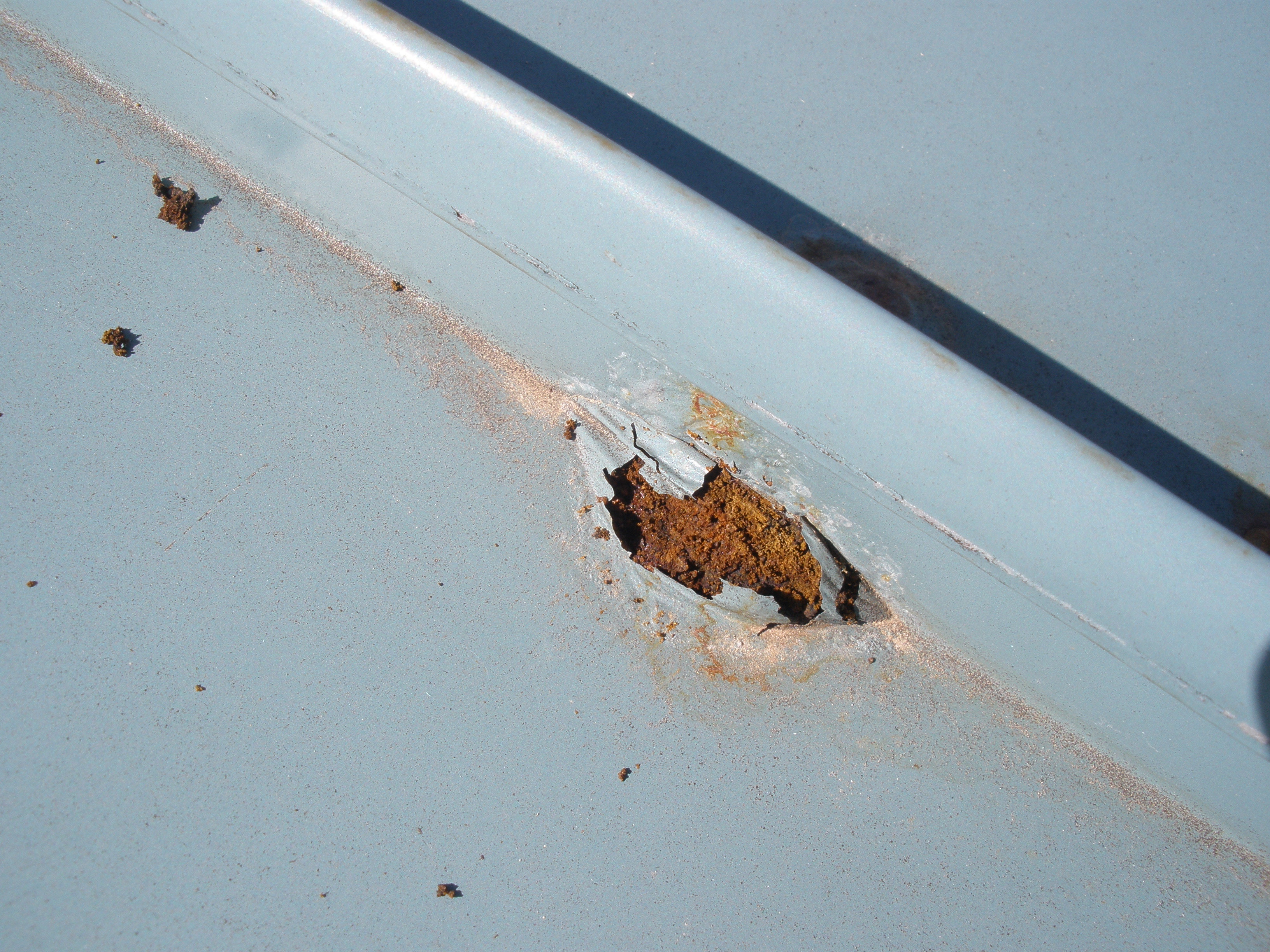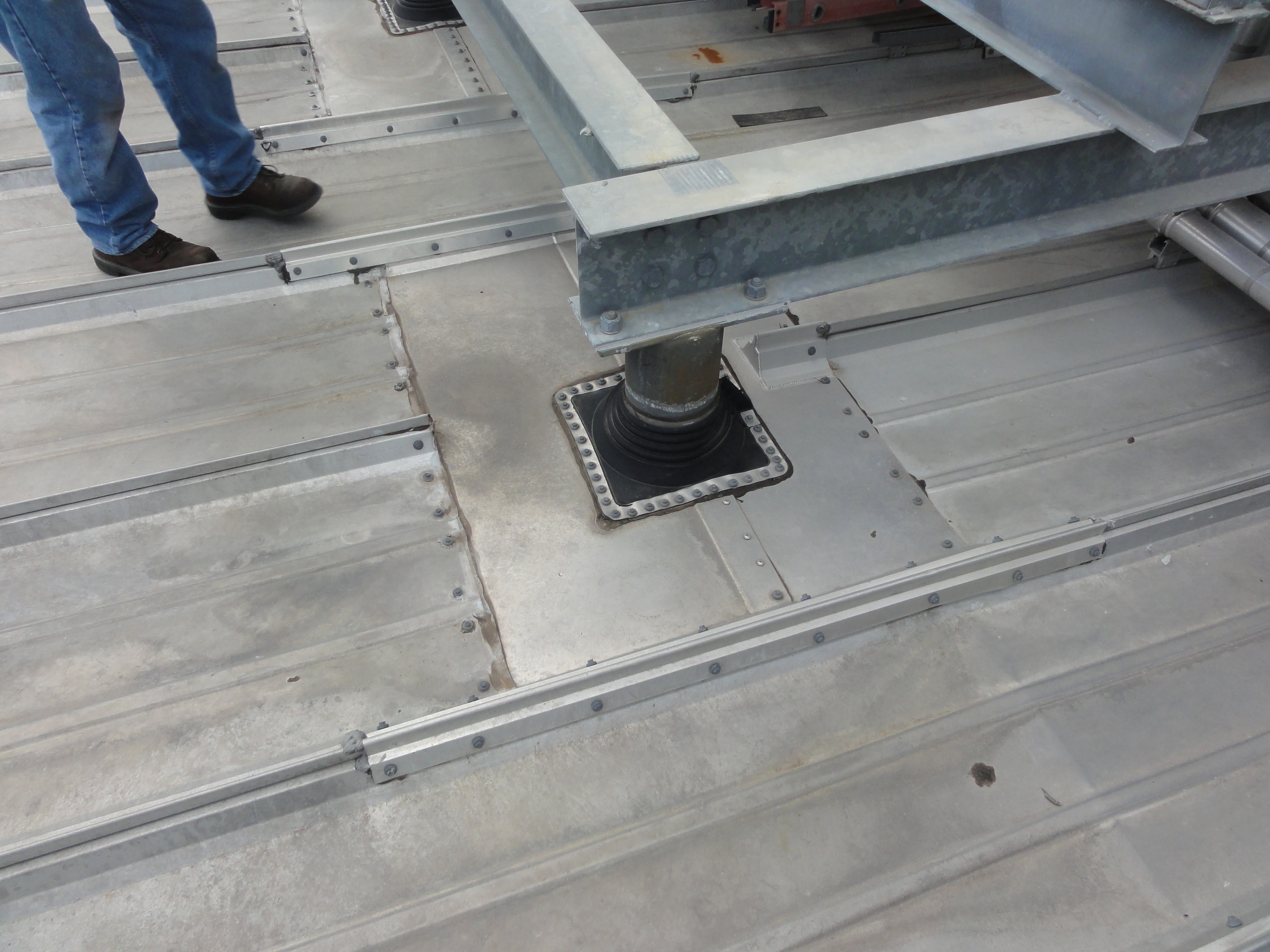The good news is the new waterproof underlayments have been a boon to the metal roofing industry and have made installation easier and more efficient. The bad news is if installers don’t get the details right, moisture can seep in, sit on top of the underlayment, rusting out the bottom of the roofing panels or destroying the base of the clips. Building owners and maintenance people will never know until the problem is one that requires a significant investment to address.
Controlling leaks is always the first admonition of roofing, but hidden leaks have the potential to cause much greater damage

Photos courtesy of MBCI
“If you use peel-and-stick membranes,” says Ken Buchinger, general manager of technical services, MBCI, Houston, “you have to be especially careful. It will hold the moisture and rust the roof from underneath. Felt will eventually leak, and if you have open rafters you’ll be able to see it and fix it easily. But if it’s a waterproof membrane, it can just sit there and rust. It can go on for years before anyone notices and then a small, inexpensive problem has become an expensive repair.”
“If you’re going to use peel-and-stick,” he says, “you have to go above and beyond on your details and make sure they’re really buttoned up. It’s kind of a belt and suspenders approach.” Or, as A.R. Ginn [founder of MBCI and Metal Construction Hall of Fame recipient] said, “If a little is good, a lot is a whole lot better.”
All reputable metal roofing manufacturers warranty their products, but all require specific installation procedures to be followed to ensure the warranty. Trained crews for professional contractors can execute those procedures efficiently and correctly. When there is a roof failure, it is just as likely the result of a trade contractor working on a completed roof and causing damage after installation. To address that, contractors need to coordinate with all trades who might be on the roof, and make sure there is an inspection not just after the roof installation, but after the project is completed.
Where’s the Danger? Penetrations and Flashing
According to Andy Williams, PE, director of codes and standards for the Metal Construction Association (MCA), the biggest threats to any roof system are the points where there is a penetration of the roof. That includes things such as soil stacks and lightning protection.
For the most part, round penetrations in a roof are fairly simple. The issue J.B. Wissmann, president, Dimensional Metals Inc., Reynoldsburg, Ohio, sees most often is a penetration that occurs right on the seam. “There are certain details and conditions that tend to be problems more than others,” he says. “But when we issue a watertight warranty, we produce shop drawings specific to that project. Any valley or penetration details are going to be provided to the contractor. We also inspect the roof after installation.”
In his experience, the best practice for working with general contractors and trade contractors is the trade will run the material, such as soil piping or HVAC condensation line, right up to the roof deck, and the roofing contractor will handle the roof penetration. “As long as it’s just a regular pipe and it’s not through a seam, we can just stick an EPDM boot on it, and that’s not a problem.”
Wissmann does point to the difficulty of managing roof curbs. Often the curb is flashed prior to the roof being completed so that the height of the flashing is too low. When measuring up the wall, the contractor works the required 8 inches up the wall, but measures it off the deck and doesn’t account for the height of the insulation and roofing material. Consequently, the flashing is too low, and water can wick up underneath it.
In 2018, the MCA produced the “Service Life Assessment of Low-Slope Unpainted 55% Al-Zn Alloy Coated Steel Standing Seam Metal Roof Systems,” that reported on an investigation of the performance of metal roofs over time. The major conclusion was that metal roofing will perform as long as the building performs, far outlasting other, conventional building materials. However, installation issues can adversely affect performance, and the report identifies best practices for particular kinds of roof penetrations and flashings.
When a roof is penetrated, such as for soil stack or condensation line, it must be booted. For other installations, such as HVAC or ancillary heavy objects, the report suggests that roof clamps avoid penetrating the metal skin, thereby, keeping the metal skin inviolable and higher performing.
MCA also produced a Metal Roofing Installation Manual in 2016 that gives specific best practices for a variety of circumstances that will help contractors deal with difficult flashing issues. For example, when installing roof curbs, the manual suggests following these criteria whenever possible:
- Use curbs made from aluminum or stainless steel
- Use under/over curbs
- Use the following clearances:
- Minimum 12 inches between panel end and diverter on the upslope
- Minimum 6 inches between the curb sides and panel seams
- Use rib-to-rib curbs
Where’s the Danger? Valleys and Window Details
Any place on a roof where water or snow can collect is a potential spot for leakage and requires special attention. That can be on valleys or crickets or along curbs. But even hips and ridges should get care. Making certain the seals is tight all the way to the edge of the hip or ridge is essential to best practices. Damaged material, improper sealant installation, loose fasteners can all contribute to a leaky roof. All of them are a result of poor installation technique that includes everything from material handling to roof care after installation. The MCA installation manual provides a checklist for inspection that identifies problems in these installations. Among the items it suggests taking a careful look at are:
Hips and Ridges
- Loose or missing fasteners
- Cleat securement
- Open ends, or lap joints and covers
- Loose or displaced closures and baffles
- Damage from foot traffic
- Damage from expansion and contraction
- Sealants displaying gaps, or signs of cracking, weathering or aging; or new sealant that is missing, smeared or misapplied.
- Corroded metal
- Slippage of hip covers (downslope)
Valleys
- Loose or missing fasteners
- Open ends, or lap joints and covers
- Exposed sealant, tape and mastics displaying gaps, or signs of cracking, weathering or aging; or new sealant that is missing, smeared or misapplied.
- Metal panels improperly secured or misaligned at valley edges
- Damage from foot traffic
- Obstructions blocking water now
- Corroded metal
- Signs of expansion and contraction
The final area Wissmann identifies that requires special attention is flashing on windows. This location may not be a site of significant moisture penetration but it can be a difficult bit of work because the flashing details from window manufacturers don’t necessarily coordinate well with the roofing flashing. Making sure the window installer and the roofing contractor work together to avoid a potential problem is essential.
Where’s the Danger? Sealants
Today’s high-performance sealants are designed to offer superior performance, but like any building material, they require proper installation to achieve that performance. Miguel Pena heads sales and marketing for GSSI Sealants, Houston, which manufacturers sealant tapes. He is creating a best practices document for MCA and points to five specific areas for sealant best practices.
- Clean the surface for best adhesion
- Make sure the materials are dry
- Apply the sealant on site rather than pre-apply
- More sealant is not always better
- Choose the right sealant
When the MCA team inspected roofs for its service life report, it reported, “The butyl sealants used in the construction of these roofs were observed to be consistently tacky to the touch with good elastic webbing characteristics and adhesion to adjacent surfaces.” In other words, the sealants performed equally to the metal roof. Only the improper installation can make the entire system suspect.









